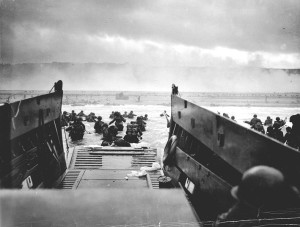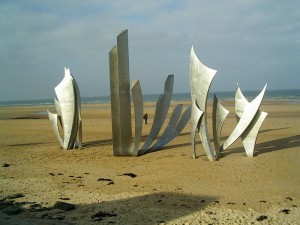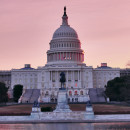Election 2016: Donald Trump, Hillary Clinton, and the War on Women
Before Donald Trump began his run for the Presidency, he was popular among liberals. While he bragged about his sexual conquests, liberals didn’t mind; after all, he was pro-choice on abortion and spoke the politically-correct language. He was the New York version of Bill Clinton: the left-leaning Alpha male who attracted women like dung attracts flies.
But when he became a Republican Presidential candidate and embraced the pro-life position on abortion, the Donald suddenly became an enemy of women. In his first debate performance, Fox News anchor Megyn Kelly peppered him with questions about his remarks about women—his spat with Rosie O’Donnell, instigated by O’Donnell, made headlines—and Trump’s remarks about Kelly after that debate were inflammatory.
Still, what is The Donald’s record with women? And how does his record stack against that of his presumptive Democratic opponent, Hillary Clinton?
The Donald is nothing if not a businessman. As a high-profile business owner, Trump has hired thousands of people, men and women alike, over the decades. That allows us to get a look at his record as an employer.
If he promoted a hostile work environment, we would know that. But that doesn’t appear to have been the case, as many women who have worked for him over the years will vouch for his fair treatment of them.
Where feminists love to carp about the “glass ceiling”, Trump had no problem hiring women for very high executive positions, putting them in charge of critical projects. If he were bigoted about women, it didn’t show in the way he hired, compensated, and promoted women in his companies.
And while Trump’s sexual dalliances are no secret, it’s not like he has made any effort to cover them up.
Contrast that record with that of Ms. Clinton.
- In 1992, she commandeered the efforts to quash the “bimbo eruptions”, women who came forward about their affairs with then-Gov. Bill Clinton, who was running for President;
- Throughout the Clinton Presidency, she stood by efforts to smear women who had allegations of sexual harassment against her husband;
- She consistently paid women in her employ less than the men for the same jobs;
- As a Senator and a Secretary of State, she consistently supported the abortion holocaust, at least half the victims of which are female and whose promoters specifically market this genocide to the very black community to which she panders for votes.
Neither Clinton nor Trump are perfectly sterling in their dealings with women. At the same time, the President is the Chief Executive, and it is on the Executive to set the standard for how leaders treat people, first as human beings, and also as employees.
Trump, while a novice to the pro-life camp, at least seems to get it, accepting the premise that abortion involves the wanton killing of another human being. Clinton, on the other hand, is in bed with the worst of the abortion rights movement, from Planned Parenthood to NOW to Emily’s List.
And as employers, Trump has clearly been more equitable to women than Hillary. Moreover, he has been downright charitable where he had no incentive to be, as former Miss USA Tara Conner can attest.
Make no mistake: one candidate in this election season is very much an enemy of women.
But that enemy of women is not Donald Trump, but rather Hillary Clinton.
Read MoreKey Founding Figures – Part II
This is the second part of a three part series highlighting seven key Founding Fathers as identified by historian, Richard B. Morris, in 1973. The two such figures in focus on this blog are probably the most recognized names in American history: Benjamin Franklin and George Washington.
 A world-renowned polymath, Benjamin Franklin was an author, printer, politician, postmaster, scientist, and diplomat. He was at the forefront of the efforts to have the Stamp Act repealed by Parliament, and became a national hero in America as a result. He created the first newspaper chain, believing the press had a public service duty. He made several “small but important changes” to the first draft of the Declaration of Independence. Franklin was an ambassador to France during the American Revolution and secured a military alliance in 1778. He negotiated the Treaty of Paris in 1783. The French were fascinated with the American, who wore a coonskin hat during his time there, and was active with the local freemasons. Benjamin Franklin was the only founding father to sign all four of the key documents in the establishment of the U.S., the Declaration of Independence, the Treaty of Alliance with France, the Treaty of Paris, and the U.S. Constitution.
A world-renowned polymath, Benjamin Franklin was an author, printer, politician, postmaster, scientist, and diplomat. He was at the forefront of the efforts to have the Stamp Act repealed by Parliament, and became a national hero in America as a result. He created the first newspaper chain, believing the press had a public service duty. He made several “small but important changes” to the first draft of the Declaration of Independence. Franklin was an ambassador to France during the American Revolution and secured a military alliance in 1778. He negotiated the Treaty of Paris in 1783. The French were fascinated with the American, who wore a coonskin hat during his time there, and was active with the local freemasons. Benjamin Franklin was the only founding father to sign all four of the key documents in the establishment of the U.S., the Declaration of Independence, the Treaty of Alliance with France, the Treaty of Paris, and the U.S. Constitution.
Franklin died on April 17, 1790 at the age of 84. 20,000 people attended the funeral of the man who was called, “the harmonious human multitude.” His quick wit, clever sayings, constant curiosity and dedication to God and country still fascinate and inspire people today.
 George Washington was known as “the father of his country”, even during his lifetime. He opposed the Stamp Act of 1765 and found the British Proclamation of 1763 that prohibited settlement beyond the Alleghenies irritating. He didn’t take a leading role in the colonial resistance against the British Ben until the Townshend Acts of 1767 were passed. However, he was opposed to the colonies declaring independence according to letters from this period. He wasn’t opposed to resisting violations by the Crown of the rights of Englishmen, and called a resolution to the House of Burgesses asking Virginia to boycott British goods until the Acts were repealed. After the Intolerable Acts were passed, Washington chaired a meeting that produced the adoption of the Fairfax Resolves which called for the convening of the Continental Congress and secured the use of armed resistance as a last resort.
George Washington was known as “the father of his country”, even during his lifetime. He opposed the Stamp Act of 1765 and found the British Proclamation of 1763 that prohibited settlement beyond the Alleghenies irritating. He didn’t take a leading role in the colonial resistance against the British Ben until the Townshend Acts of 1767 were passed. However, he was opposed to the colonies declaring independence according to letters from this period. He wasn’t opposed to resisting violations by the Crown of the rights of Englishmen, and called a resolution to the House of Burgesses asking Virginia to boycott British goods until the Acts were repealed. After the Intolerable Acts were passed, Washington chaired a meeting that produced the adoption of the Fairfax Resolves which called for the convening of the Continental Congress and secured the use of armed resistance as a last resort.
He was chosen to be a delegate of the First Continental Congress. After the events of the battles of Lexington and Concord in April of 1775, the conflict between Britain and the colonies erupted into armed conflict. Washington traveled to the Second Continental Congress dressed in a military uniform, showing he was prepared for war. On June 16, 1775, Washington formally accepted command of the American Army with these words, “But lest some unlucky event should happen unfavorable to my reputation, I beg it may be remembered by every gentleman in the room that I this day declare with the utmost sincerity, I do not think myself equal to the command I am honored with.” Washington’s would lose more battles than he won throughout his military career, but his leadership that helped secure American independence.
In 1789 Washington was unanimously elected as the first president of the America. He passed away at the age of 67 in 1799, the nation mourned for months.
Part three will highlight the last of the seven key Founding Fathers: Alexander Hamilton, James Madison, and John Jay, all three of whom were writers of the Federalist Papers.
Read More
The Shifting Flag
 Did you know that the design of the American Flag has been officially changed 26 times since the Flag Resolution in 1777? Prior to 1777, there were no official guidelines as to the design of the flag resulting in an unstandardized representation of the new country. Afterwards, since the Continental Congress had not specified how to arrange the stars when they wrote the Flag Resolution, many unique designs still cropped up. For example, the Flag Resolution did not state how the stars were to be arranged on the blue field, so there were flags with stars in rows, a circle, and even a diamond shape.
Did you know that the design of the American Flag has been officially changed 26 times since the Flag Resolution in 1777? Prior to 1777, there were no official guidelines as to the design of the flag resulting in an unstandardized representation of the new country. Afterwards, since the Continental Congress had not specified how to arrange the stars when they wrote the Flag Resolution, many unique designs still cropped up. For example, the Flag Resolution did not state how the stars were to be arranged on the blue field, so there were flags with stars in rows, a circle, and even a diamond shape.
Ask any elementary student the name of the person credited with designing and making the first American flag and it’s a sure bet the response will be Betsy Ross. The popular legend, initiated by Ross’s grandson William Canby, that Ross sewed the first American Flag for General George Washington, spread rapidly preceding the 1876 centennial celebrations. However, this is disputed amongst historians, as Betsy Ross was only one of at least 17 flag makers in Philadelphia. A Ross biographer, Marla Miller, wrote that Ross’s contribution was to alter the design from a six-pointed star to a five-pointed one because they were easier for her to make.
 However, the first designer for the national flag can be supported as Francis Hopkinson, American author and delegate, in 1777. Hopkinson arranged the stars in a 3-2-3-2-3 pattern in the canton, with thirteen red and white alternating stripes. He sent a letter to Congress, mainly in jest, requesting payment for his services. He asked only for “a Quarter Cask of the public Wine,” which was not granted.
However, the first designer for the national flag can be supported as Francis Hopkinson, American author and delegate, in 1777. Hopkinson arranged the stars in a 3-2-3-2-3 pattern in the canton, with thirteen red and white alternating stripes. He sent a letter to Congress, mainly in jest, requesting payment for his services. He asked only for “a Quarter Cask of the public Wine,” which was not granted.
In 1795, after the inclusion of two more states into the union, the number of stars and stripes each increased to fifteen. More new states joined the Union, but no alterations were made because many thought the flag would become cluttered. That changed in 1818 after U.S. Naval Captain Samuel C. Reid sketched three designs for a Congressional committee charged with determining future modifications to the flag. Reid suggested reducing the number of stripes from fifteen to thirteen to honor the original colonies, and placing twenty stars in the blue field representing the number of states at that time.
 In 1959, as adoption of a fiftieth state was approaching, Congress received thousands of designs for the new flag, settling on seventeen-year-old Robert G. Heft’s school project. Heft, of Lancaster, Ohio, originally was given a B- for his flag, but his teacher told him that if Congress selected his design, Heft’s grade would be reconsidered. Congress chose his flag and Heft’s grade was changed to an A. That same flag has been the longest used design for our nation’s colors in its entire history.
In 1959, as adoption of a fiftieth state was approaching, Congress received thousands of designs for the new flag, settling on seventeen-year-old Robert G. Heft’s school project. Heft, of Lancaster, Ohio, originally was given a B- for his flag, but his teacher told him that if Congress selected his design, Heft’s grade would be reconsidered. Congress chose his flag and Heft’s grade was changed to an A. That same flag has been the longest used design for our nation’s colors in its entire history.
It’s interesting to see how a part of our national identity has changed over the years. For a complete timeline of our nation’s flags, visit https://www.ushistory.org/betsy/flagfact.html. Remember to hang this historied symbol out on Flag Day!
Read More
June 14 – A Day of Commemoration
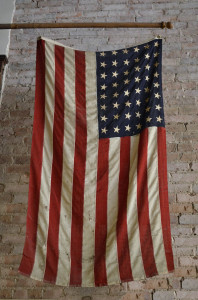 Are you ready to display Old Glory this month? Check your calendar and you’ll see Flag Day noted on June 14. Our national flag’s birthday, tucked between Memorial Day and Independence Day, doesn’t seem to ignite much patriotism among Americans these days. Perhaps it’s because Flag Day is not a federal holiday or maybe Americans just don’t understand the historical significance.
Are you ready to display Old Glory this month? Check your calendar and you’ll see Flag Day noted on June 14. Our national flag’s birthday, tucked between Memorial Day and Independence Day, doesn’t seem to ignite much patriotism among Americans these days. Perhaps it’s because Flag Day is not a federal holiday or maybe Americans just don’t understand the historical significance.
During the American Revolutionary War, colonists fought under unit or regimental flags. Realizing a need for conformity, the Second Continental Congress took the responsibility of making the change. It was on June 14, 1777, while meeting in Philadelphia to draft the Articles of Confederation, that the Second Continental Congress proclaimed a specific design for the Union’s flag—the purpose being that each of the naval vessels of the United States Continental Army would be recognized collectively as representing the United States. Taken from the original proclamation: “Resolved, That the flag of the thirteen United States be thirteen stripes, alternate red and white; that the union be thirteen stars, white in a blue field, representing a new constellation.”
Flying of the flag by individuals didn’t become popular until the Civil War in 1861. Numerous patriotic citizens and elected officials advocated June 14 for observance of the U.S. flag, but it was Bernard J. Cigrand who was dubbed the “Father of Flag Day.” In 1885, Cigrand, a 19-year-old teacher at Stony Hill School, Waubeka, Wisconsin, placed a 10 inch, 38- star flag in a bottle on his desk then assigned essays on the flag and its significance, leading students in the first formal observance of the flag. In June, 1886, he moved to Chicago and publicly proposed an annual observance of the United States flag in an article titled “The Fourteenth of June,” published in the Chicago Argus newspaper. In June 1888, Cigrand advocated the same in a speech before the “Sons of America,” an organization that founded American Standard Magazine. Cigrand was appointed editor-in-chief and used his position for promoting patriotism and the flag. He later became president of the American Flag Day Association and the National Flag Day Society.
Finally, in 1916, President Woodrow Wilson issued a proclamation officially establishing a nationwide observance of Flag Day on June 14. On August 3, 1949, President Harry S. Truman signed legislation designating June 14 as National Flag Day. The week of June 14 is now designated as “National Flag Week” when the president issues a proclamation urging us to fly the American flag on our homes, businesses, and all government buildings. Some cities, towns, and organizations hold parades, carnivals, fireworks and other events. The National Flag Day Foundation holds an annual observance for Flag Day on the second Sunday in June at its Americanism Center in Waubeka, Wisconsin.
So get out the iconic Old Glory and hang it proudly. National Flag Day is a way to collectively tell the world that our national flag unites our 50 states—one Nation, under God, with Liberty and Justice for all!
Read More70 Years of Remembrance
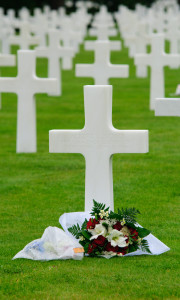 This year marks the 70th anniversary of the largest seaborne invasion in history—June 6, 1944, D-Day. Planning for this massive assault started a year earlier. A strategic deception was put into place: Operation Bodyguard. The idea was to fool Germans into thinking that the invasion would occur at Calais, marking the shortest distance between England and France. Inflatable tanks, wooden hangars, and other diversions were put into place in southern England to deepen the illusion. Bombing raids ravaged the Atlantic Wall for months to soften the position and increase the chances for an Allied victory.
This year marks the 70th anniversary of the largest seaborne invasion in history—June 6, 1944, D-Day. Planning for this massive assault started a year earlier. A strategic deception was put into place: Operation Bodyguard. The idea was to fool Germans into thinking that the invasion would occur at Calais, marking the shortest distance between England and France. Inflatable tanks, wooden hangars, and other diversions were put into place in southern England to deepen the illusion. Bombing raids ravaged the Atlantic Wall for months to soften the position and increase the chances for an Allied victory.
Of the codenamed beaches attacked, Utah, Omaha and Pointe du Hoc were American invasions. Originally, the plan was to assault these beaches on the morning of June 5, but Dwight D. Eisenhower, Supreme Commander of the Allied forces in Europe, orders a twenty-four hour delay because of bad weather. At midnight on June 6, parachutists of the American 82nd, and 101st divisions drop between Sainte-Mère-Église and Carentan. Unfortunately, most of the soldiers in these divisions are scattered and their effectiveness greatly reduced.
The first beach landings occur at 6:30 a.m. at Utah beach. Using amphibious tanks and infantry, American soldiers storm the Nazi-controlled cliffs to surprise the Germans. They face flooded beaches, mines, and heavy machine gun fire in an attempt to gain a foothold in continental Europe. By noon, the troops at Utah have taken the position and are moving along the road to Pouppeville to link up with the parachutists under General Taylor.
On Omaha beach—the most heavily fortified position—things have gone awry. Rough waters and high tides flood most of the amphibious tanks, full crews inside. Landing crafts struggle to reach the beach. Soldiers wade through water 50 to 100 yards to gain footing in the sand. Enemy machine gun fire rips through the men resulting in 2,000 American casualties at Omaha alone.
At Pointe du Hoc, 200 U.S. Rangers climb the 30 meter cliffs to destroy German coastal guns. Reaching the top with ladders, ropes, and grappling hooks, the men discover that the guns had already been removed. They search the surrounding countryside. Finally, they find the coastal weapons unguarded 600 yards south of the point and disable them with thermite grenades. The Rangers then come under enemy fire; some are wounded and others captured, until only ninety men remain to fight. When they run out of ammo, they resort to firing seized German weapons. Reinforcements from the 116th Infantry Regiment arrive in time to claim victory.
This was a great day for the United States and her allies D-Day assured that Hitler’s regime would fall. The sacrifice made by the soldiers and the resources used to ensure that the assault would be successful harkens back to a time when the U.S. was willing to give its all to grant all mankind, under God, the opportunity for life and liberty.
Read MoreNew history course provides insight into America’s past . . . and future
Is your interpretation of American history warped? There are those who strive to weaken our national heritage by revising the true origins of America—those based on clear Biblical principles. Such forces influence Americans to abandon valuable principles that God has set forward for us to follow personally, and more importantly, as a nation. Of late, the revision of key points pertaining to the goals of the Founding Fathers has resulted in the moral decline of our country.
The twisting of American history pervades all aspects of today’s culture. It’s sometimes difficult to decipher truth from deceit. To the rescue of patriotic citizens is a new history course that provides resources for recognizing exactly what our Founding Fathers intended for our nation, and in their own words. The God and Country History Symposium offered through the First Principles Press trains both students and adults in researching the truth of our country’s foundation and recognizing undemocratic change in its principles.
The 15-week course will be led by Colonel Ronald Ray, a writer and speaker on Constitutional issues, and Director of Research for First Principles, Dr. Linda Jeffery. They will post daily to a closed forum using various multimedia formats including audio, video, and print. Additionally, anyone taking the course will have access to the entire Digital Archive of the First Principles Press containing thousands of primary source documents. This allows the students to supplement commentary with review of actual documents. It’s highly recommended to all who want to deepen their understanding of how and why we as Americans have strayed from our roots and the responsibilities we have as a nation to defend and restore them.
More information about the God and Country History Symposium can be found here: https://firstprinciplespress.org/wp-content/uploads/2014/03/GodCountry_Section-1.pdf
Enroll here: https://firstprinciplespress.org/store/products/god-and-country-history-course/


